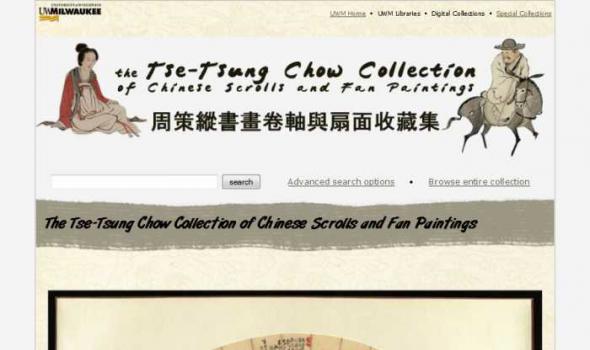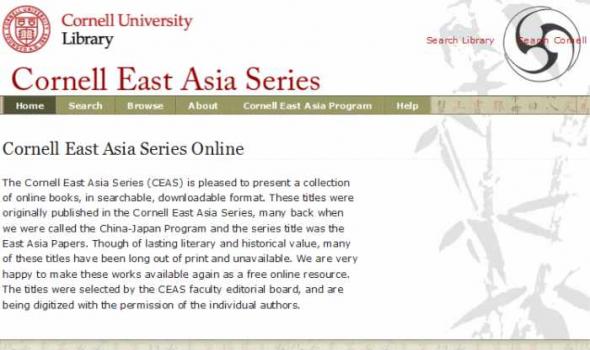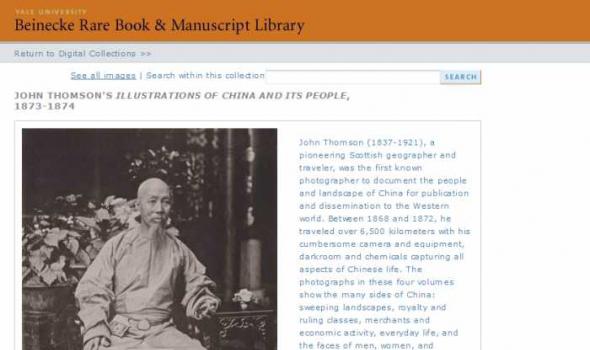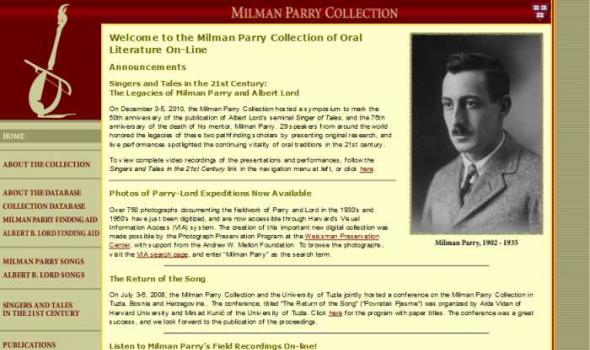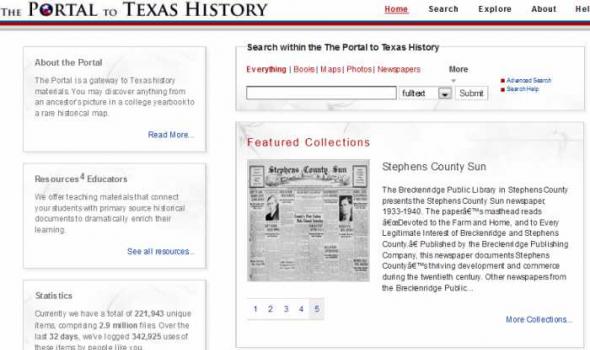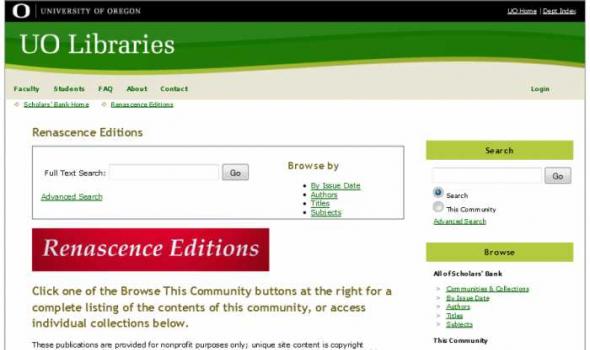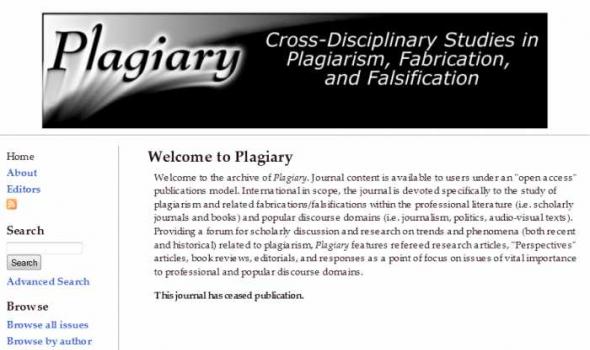China
Chinese Paper Gods Collection Essays The images in this collection were assembled by Anne S. Goodrich (1895–2005) in 1931, when as a Christian missionary in Peking she became interested in local folk religious practices. She studied the paper gods in this collection for much of her life. After publishing her research conclusions in 1991, she donated these prints to the C. V. Starr East Asian Library, Columbia University. The images are divided initially by usage: Those which were purchased to be burned immediately and serve as emissaries to heaven; and those which were purchased to be displayed for a year while offering protection to the family in a variety of ways, before being burned. The images are further divided by display locations and by the deities they represent.
About the Collection The C. V. Starr East Asian Library's run of Ling long women's magazine is one of the most complete outside China, acquired, we believe, in the late 1930s or early 1940s as part of a concerted effort to enlarge Columbia University's Chinese-language holdings. The collection expanded dramatically in the years between 1938 and 1941 when the holdings more than doubled, thanks to a special grant from the Rockefeller Foundation.
The Fine Arts Library currently houses 2,602 individual East Asian rubbings, the majority of which are from China. The rubbings were made from ancient stone stelae, tomb tablets, Buddhist and Daoist scriptures on stelae and rocks, as well as inscriptions and designs copied from bronze vessels, jade objects, ceramics, tomb bricks, and roof tiles, objects dating from the Qin Dynasty (221-207 BCE) to the Ming Dynasty (1368-1644 CE).
Introduction The Harvard-Yenching Library holds some 5,000 photographs and 10,000 negatives taken by Hedda Hammer Morrison (1908–1991) while resident in Beijing from 1933 to 1946. The photographs, mounted in thematic albums prepared by Mrs. Morrison, and the negatives, were bequeathed to the Harvard-Yenching Library, "the best permanent home for her vision of a city and people that she loved [Alastair Morrison]." All of the photographs contained in the 28 albums assembled by Hedda Morrison have been cataloged and digitized and can be viewed in VIA (Visual Information Access), the union catalog of visual resources at Harvard.
The Rev. Claude L. Pickens, Jr. Collection on Muslims in China Do Not Divide Moslems and Chinese "Along the Old Silk Road to Europe. East Gate, Hao Tien" (CP02.29.03) from The Rev. Claude L. Pickens, Jr., Trip to Northwest China , photograph album, p. [29] Over 1000 photos of Muslims and Christian missionaries working among them in Western China in the 1920s and 1930s form the core of this collection, which is supplemented by several hundred books, pamphlets, broadsides, etc., in several languages. Gift of Rev. Claude L. Pickens, Jr. in memory of Joseph Fletcher Professor of Chinese and Inner Asian History at Harvard University. The albums and photographs can be viewed in the VIA online catalog.
Wednesday, Aug 31, 2011 South Central China and Tibet: Hotspot of Diversity For over a century, Arboretum staff have explored and documented the natural and cultural resources of Asia. In 1924, a three-year expedition departed for one of the most unusual areas on earth—the first of many Arboretum expeditions to a region that is floristically one of the richest in the world. Seventy years later, other Arboretum expeditions returned to collect and inventory the flora.
The East Asian Library's Collection The East Asian Library of the University of California, Berkeley has 2,700 Chinese rubbings, second in number among collections outside East Asia only to the Field Museum of Natural History in Chicago. The nucleus of the collection, over half of the items, was acquired in 1950 from the estate of Mitsui Soken, a wealthy Japanese bibliophile, and includes albums of rubbings once owned by noted Chinese connoisseurs of the nineteenth century. Other important acquisitions were made through purchases from Chinese scholars and dealers and through the bequest of Professor Woodbridge Bingham's collection. The library's holdings are especially rich in albums of models of calligraphy and bronze inscriptions.
Old China Hands Archive Who is an "Old China Hand" and what is the "Old China Hand Experience?" According to A Concise Dictionary of Slang and Unconventional English, edited by Paul Beale, (Macmillan, 1989), this term has been in use since approximately 1910 and is applied to "One who has spent many years in China in the commercial or civil service, or as a missionary." The dictionary's definition leaves out some important categories of people, particulary the waves of refugees from the conflicts of Europe and elsewhere who found temporary shelter in China, as well as people who served in the military of many nations. It must also be expanded to point out that implicit in the term is the notion of contact between Chinese and non-Chinese cultures.
Edinburgh-born John Thomson (1837-1921) was one of the great names of early photography. His photographic legacy is one of astonishing quality and depth.
Thomson's images of China and South-East Asia brought the land, culture, and people of the Far East alive for the 'armchair travellers' of Victorian Britain.
He was one of the pioneers of photojournalism, using his camera to record life on London's streets in the 1870s. As a society photographer he also captured the rich and famous in the years before the First World War.
These pages present a brief introduction to Thomson's work, with examples drawn from the National Library of Scotland's collections.
HARRISON BROWN The Sian Incident and Beyond "Harrison Brown: The Sian Incident and Beyond" is a chronicle of author and journalist Harrison Brown's voyage to China between 1936 and 1937, and the events that unfolded during that time in what has become known as 'The Sian Incident'. The events are presented largely through the eyes of Harrison Brown himself - 'H.B.' as his friends called him - through the journals that he kept during his trip, the photographs he took, and the articles and manuscript that he wrote during and after his journey. You may browse through a collection of 137 of H.B's photos, his 22-chapter manuscript "On the Trail of a Freelance", his original hand-written journal pages, and much more.
About the Collection In September 2005, UW-Madison Professor Emeritus Tse-Tsung Chow (who died in 2007) and his wife Nancy Wu Chow donated over 120 calligraphic and painted Chinese scrolls and fans, ranging from the 18th through the 20th centuries, to the Special Collections Department of the UWM Libraries. Professor Chow's collection is an invaluable addition to Special Collections, offering primary examples of Chinese culture spanning a two-hundred year period, with didactic applications in a broad range of disciplines at UWM, including art, art history, history, geography, foreign languages and linguistics, and international studies.
History of Medicine Introduction 引言 Tuberculosis was one of the major epidemic diseases in 20th-century China, along with smallpox, malaria, cholera, schistosomiasis, and other epidemics. Organized efforts to fight the disease began in 1933 when the National Anti-Tuberculosis Association of China was established. From 1950 through 1980, the Chinese government launched anti-tuberculosis campaigns as part of the national public health movement. The Anti-TB Association and the Red Cross played important roles in the health education campaigns. Health posters became an important tool to disseminate health knowledge and methods of prevention and treatment. The campaigns, along with the universal free healthcare, led to a significant decline of tuberculosis.
History of Medicine Chinese medicinal compounds were recorded as early as the Han dynasty, 2,000 years ago. Beginning in the 1880s, Western companies – notably Bayer, Hoechst (now Aventis), and Eli Lilly – challenged traditional medicine with the resources of modern capitalism. In turn, Chinese companies entered the new commercial markets: the Tianjin Pharmaceutical Factory, founded in 1921, used western methods to produce and market traditional Chinese medicines. The sheets shown here advertise a mix of European and Asian products, using ideal feminine and masculine images as well as the Tian An Men (Gate of Heavenly Peace). Ads for progesterone and methyltestosterone show the appeal of potent over-the-counter hormone therapies. 21 April 2010
History of Medicine Introduction Malaria was historically a major threat to the health of the Chinese people. In 1950, over 30 million Chinese people suffered from malaria and one percent of them died. The Chinese government launched national campaigns against malaria in the early 1950s. Programs of malaria control were integrated in the general rural development of land reclamation, irrigation construction, and improvement of sanitary conditions for both humans and livestock. While timely treatment of malaria is essential, the anti-malaria campaigns strongly emphasized preventive methods, as "prevention first" was the health policy in the 1950s-1980s.
History of Medicine Introduction The National Library of Medicine has recently acquired a large collection of Chinese Public Health materials, about seven thousand items produced from early 20th century to the year of SARS. The collection has a wide range of media presentations: posters, health newsletters, health newspapers, paintings, pharmaceutical advertisements, calendars, children's chess games, jigsaw puzzles on health topics, playing cards on SARS, lantern slides, negatives, photographs, and health award certificates, as well as books and journals. These materials present rich visual representations of public health concerns which were closely tied to the political, social, economic, and even military engagements of China during different time periods.
History of Medicine The National Library of Medicine (NLM) holds approximately 2,000 volumes of Chinese medical classics. Here we display a few of the earliest and most interesting texts from the NLM collection. Also included are portraits of a few significant figures in early Chinese medicine whose contributions range from acupuncture to the pioneering uses of herbal medicines to the concept of Yin and Yang. Through the exhibit, we hoped to draw attention to a fascinating part of NLM's historical resources. 23 October 2009
ABOUT e-ASIA The e-Asia project is funded by the University of Oregon Library through the generosity of Nissho Iwai.yella By building a collection of digitized e-books and a database of full text web resources, e-Asia strives to contribute to the research and scholarship of East Asia. While the e-Asia project is based largely on resources held at the University of Oregon Library, its purpose is neither to duplicate nor displace printed traditonal materials. Rather, by providing searchable full text, the digitalization efforts of e-Asia represent a new tool aimed at facilitating the information-gathering process.
About The Cornell East Asia Book Series (CEAS), published by the East Asia Program, is well known within the scholarly community for publishing quality books at affordable prices. We have a well-maintained website , and distribute our own books to the academic community and the public at large via mail-order and a secure online bookstore. We have published many books of lasting historical and literary value since the series was founded in 1972, when the publication was called the Cornell University East Asia Papers and the program was called the China-Japan Program. Some of these titles have gone out of print, mostly due to financial limitations. Here we are making available the best of our out-of-print collection. Most books are text-only, some include pictures and maps.
John Thomson’s Illustrations of China and Its People, 1873-1874 John Thomson (1837-1921), a pioneering Scottish geographer and traveler, was the first known photographer to document the people and landscape of China for publication and dissemination to the Western world. Between 1868 and 1872, he traveled over 6,500 kilometers with his cumbersome camera and equipment, darkroom and chemicals capturing all aspects of Chinese life. The photographs in these four volumes show the many sides of China: sweeping landscapes, royalty and ruling classes, merchants and economic activity, everyday life, and the faces of men, women, and children. Thomson was born in Edinburgh, Scotland, the son of a tobacco spinner and seller.
The Institute's collection of Asian art represents seventeen Asian cultures spanning over 5,000 years. The Department of Asian Arts has benefited greatly from generous gifts from knowledgeable collectors. Augustus L. Searle, Alfred F. Pillsbury, Richard P. Gale, Louis W. Hill, Jr., and Ruth and Bruce Dayton have donated specialized collections of international reputation, including ancient Chinese bronzes, ancient and post-Sung jade, Chinese monochrome ceramics, Ukiyo-e paintings, Japanese prints, and classical Chinese furniture. In addition, highly regarded specialized collections of Ch'ing dynasty silk textiles, Miao textiles, and surimono prints have been built over the years. The curatorial department's goal is to provide the public with a broad overview of Asian art.










